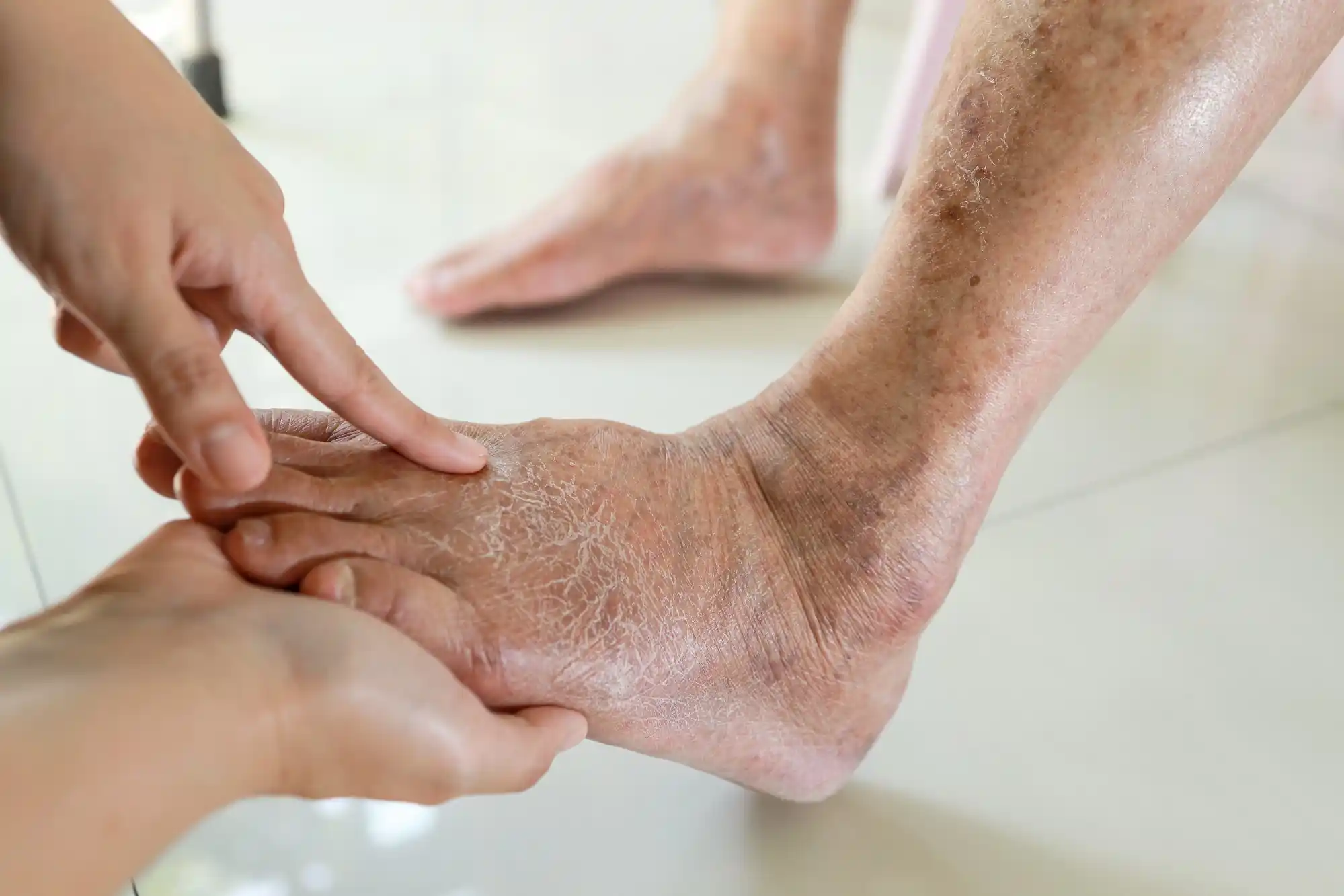Your Diabetic Foot Doctor Near York, PA
Diabetic Foot Care
Welcome to Martin Foot and Ankle's premier diabetic foot care services in South Central Pennsylvania. As the best trained and most experienced practice in the region, our team of board-certified podiatrists is dedicated to providing comprehensive care for individuals with diabetes. With doctors who subspecialize in particular conditions and pathologies, we offer specialized expertise in managing diabetic foot health to ensure the best outcomes.
At Martin Foot and Ankle, we understand the unique challenges faced by individuals with diabetes, particularly regarding foot complications. Our specialists combine their advanced training and extensive experience to deliver personalized diabetic foot care that focuses on prevention, early intervention, and tailored treatment strategies to promote foot health and overall well-being.
Take the first step toward prioritizing your foot health by scheduling a consultation with our expert podiatrists at Martin Foot and Ankle. Trust us to provide the highest level of care and expertise to help you manage and maintain healthy feet despite the challenges of diabetes.

Diabetic Foot Treatment in South Central PA
Expert Diabetic Foot Care: Treatment & Diagnosis
At Martin Foot and Ankle, we offer a range of specialized diabetic foot care services aimed at addressing the unique needs of individuals with diabetes. Our comprehensive approach focuses on preventive measures, early detection of complications, and customized treatment plans to promote optimal foot health.
Here are some key aspects of our diabetic foot care services:
- Regular Foot Examinations: Our board-certified podiatrists conduct thorough foot examinations to assess circulation, sensation, and skin integrity, crucial for early detection of potential issues.
- Diabetic Wound Prevention: We educate patients on proper foot care techniques, such as daily foot inspections, keeping feet clean and moisturized, and wearing appropriate footwear to prevent cuts or injuries that can lead to wounds.
- Wound Care Management: Our specialists are skilled in wound care management, providing advanced treatments for diabetic foot ulcers, infections, and other complications to facilitate healing and prevent further issues.
- Charcot Foot Management: This serious complication of diabetes can lead to fractures, deformities, and disability if not properly managed. Our team has extensive experience in diagnosing and treating Charcot foot.
- Neuropathy Management: Diabetic neuropathy can cause pain, tingling, and numbness in the feet, making it difficult to detect wounds or injuries. We offer various treatments to manage this condition and prevent complications.
With our expertise, dedication, and patient-centered approach, Martin Foot and Ankle is committed to helping individuals with diabetes maintain healthy feet and enhance their overall quality of life. Schedule a consultation today to benefit from our specialized diabetic foot care services tailored to your individual needs.
Frequently Asked Questions
What are some common diabetic foot pain symptoms?
- Tingling
- Numbness
- Burning sensation
- Sharp pains
- Sensitivity to touch